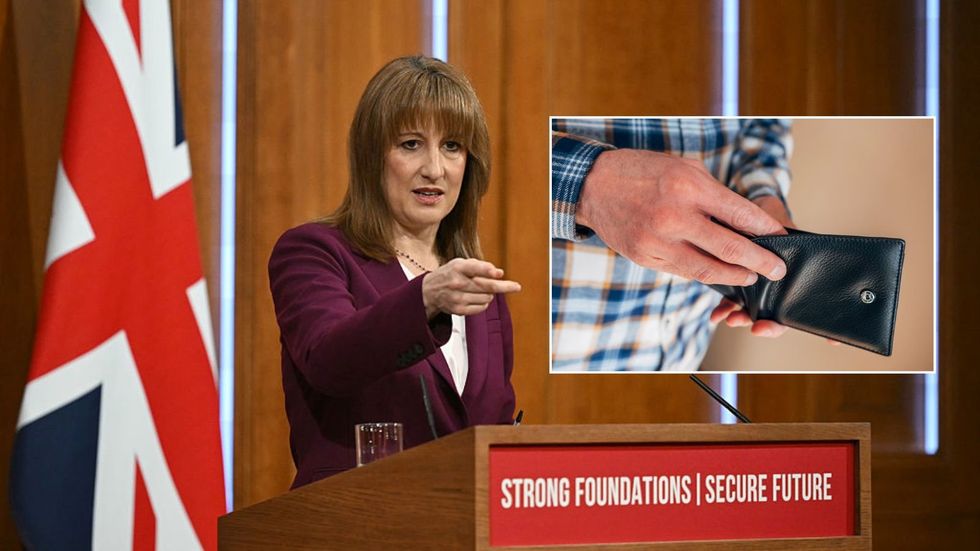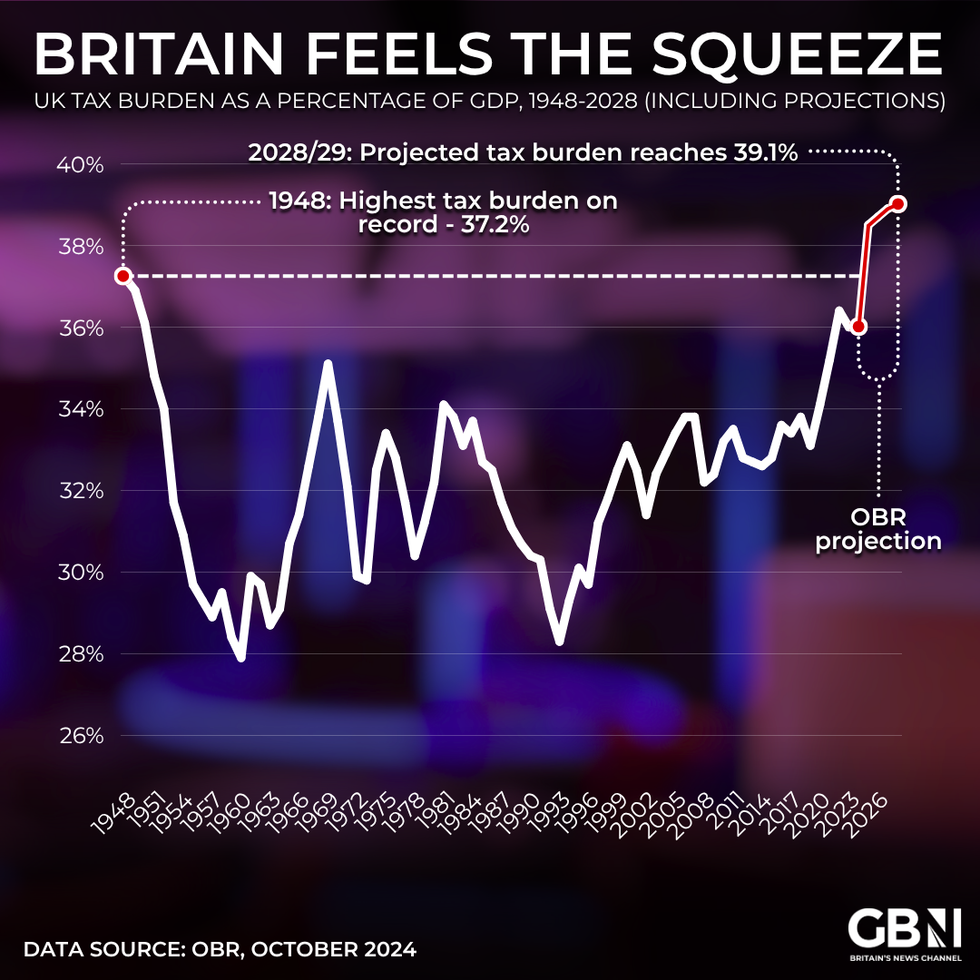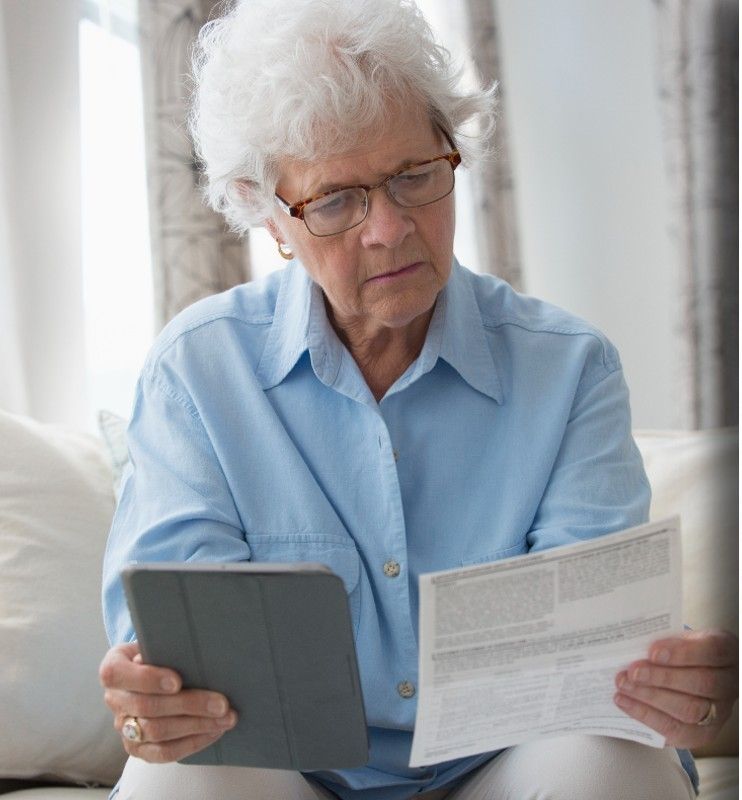As pressure mounts on the Chancellor to abandon Labour’s election promise not to raise income tax, analysis shows how the proposed tax rises could affect your personal finances.
Meanwhile, business leaders have joined calls for Rachel Reeves to consider an increase, arguing that higher taxation may be necessary to restore fiscal stability.
With the Treasury facing a deficit of more than £30billion, speculation is growing that Ms Reeves could announce a two pence rise in the basic rate of income tax, generating about £20billion in additional revenue.
The The Confederation of British Industry (CBI) said: “Tax rises and spending cuts are unpopular, but the reality is that (Rachel Reeves) faces little choice.”
Financial modelling from wealth manager Quilter shows how the changes could affect different income levels.
The most politically cautious option would be to raise income tax by two pence while cutting National Insurance (NI) from eight per cent to six per cent.
What this could mean for you
The analysis below shows how potential tax changes might affect workers across different income levels.
Below is a table of costs relating to each level of earnings.
It shows the yearly cost of a one pence rise and two pence rise in income tax. Also shown is the cost of a two per cent cut in National Insurance if implemented by the Chancellor on November 26.
If you earn:
£25,000
- 1p: £124
- 2p: £249
- NI cut: £746
£50,000
- 1p: £374
- 2p: £749
- NI cut: £2,246
£75,000
- 1p: £624
- 2p: £1,249
- NI cut: £2,757
- 1p: £874
- 2p: £1,749
- NI cut: £3,257
£125,000
- 1p: £1,249
- 2p: £2,499
- NI cut: £3,757
- 1p: £1,500
- 2p: £3,000
- NI cut: £4,257
The Confederation of British Industry (CBI) has urged the Treasury to breach Labour’s manifesto commitments, saying that creating fiscal headroom must take priority over political pledges.
Rain Newton-Smith, the CBI’s chief executive, said: “The Labour Party’s manifesto commitments are no longer economically viable.”
The CBI identified four priority areas for economic recovery: faster planning approvals, improved infrastructure delivery, scrapping proposed levies on international students and greater healthcare tax incentives for employers.

Economic analysts warn Ms Reeves needs a £30billion fiscal buffer to avoid breaching borrowing limits, three times the margin she maintained in her previous Budget.
The scale of the shortfall is driving pressure to explore all revenue-raising measures, including those previously seen as politically off-limits.
Retirees are expected to be among the most affected by any rise in income tax.
Calculations show some pensioners could pay up to £1,000 more each year.
Unlike workers who may benefit from reduced National Insurance (NI) contributions, pensioners receive no offsetting relief.
LATEST DEVELOPMENTS
- Rachel Reeves could break manifesto pledge in Budget by slashing £6BILLION from energy bills support
- Rachel Reeves urged to ‘stick to her guns’ and halve tax-free cash ISA allowance to £10,000
- Pensioners could be ‘forced out of homes’ under Treasury plans to double council tax to over £9,000

Analysis from AJ Bell suggests that a retiree earning £35,000 could face around £450 in additional tax, while someone on £45,000 could see a £650 increase.
Those on £65,000 could pay £1,000 more annually.
Tom Selby, director of public policy at AJ Bell, said the Chancellor was “playing mental gymnastics” while attempting to balance fiscal needs with election commitments.
That would limit the impact on lower and middle earners but still increase taxes on higher salaries.

Shaun Moore, tax expert at Quilter, said the Chancellor must decide “how much political capital Reeves is willing to spend to repair the public finances.”
Many taxpayers are already preparing for possible tax changes, with some choosing to retire early to secure pension allowances before the Budget.
Others have moved money into ISAs to protect savings from taxation and keep income below higher-rate thresholds.
Our Standards:
The GB News Editorial Charter







Follow